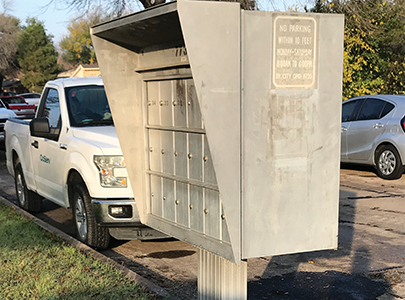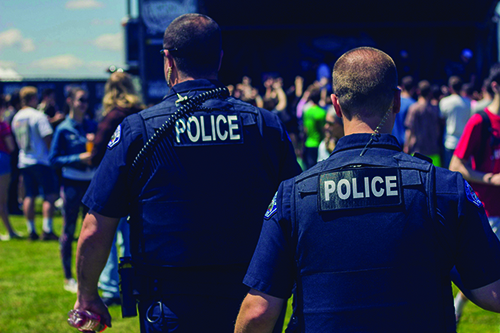We are not immune from racism’s tragedy
Reed Anfinson
Jul 1, 2020

Even in small-town rural Minnesota, what happens on the streets of Minneapolis, St. Paul, Los Angeles, Atlanta, or Washington, D.C., matters.
As streets have filled with citizens protesting the callous killing of George Floyd May 25 by Minneapolis police officer Derek Chauvin, rural America has watched from a distance. The inflamed passions of those fed up with police brutality toward Black Americans appearing on our screens is far removed.
For 8 minutes and 45 seconds, Chauvin had his knee pressing hard against Floyd’s neck. His pleas that he couldn’t breathe were ignored. He soon fell unconscious; Chauvin didn’t let up. By the time he removed his knee, Floyd was dead.
Who can’t help but be outraged when viewing the video of Floyd’s death?
“When I watch the video of officer Derek Chauvin kneeling on Floyd’s neck, choking the life out of him and ignoring his cries of distress, I want to throw something…. I can’t help but think of my own two sons and how, for either of them, a routine encounter with police — or a run-in with self-appointed sheriffs — could be fatal. I want to scream,” writes Eugene Robinson, a Black columnist with The Washington Post.
Even as a Pulitzer Prize winner, a columnist and associate editor of one of the nation’s most well-known publications, he has to fear for his children. His status doesn’t protect his sons. Robinson condemned the senseless violence, rioting and looting of those who hijacked the protests of Floyd’s death as cover for their crimes. Yet, he understands the outrage of those protesting.
“Do you want to prevent the kind of rioting, looting and arson we have seen in Minneapolis this week? Then stop police officers and racist vigilantes from killing Black men,” he writes.
For those inclined by prejudice, the actions of a few — the looting and vandalism — is an indictment of all Blacks. It takes away their legitimate anger, balances out the death of George Floyd, ingrains existing animosities and ignores more than 400 years of oppression and injustice — with an impatient dismissal only someone unfamiliar and unsympathetic to their long suffering could hold.
While serving on the board of the National Newspaper Association, we were given a tour of the Birmingham (Alabama) Civil Rights Institute. A walk through the Institute is a walk through the history of slavery, the Civil War, the abuse of the freed Blacks in the post-Civil War era and the entrenchment of segregation. It is the story of the systematic effort to disenfranchise the right of Blacks to vote. It was the story of their long, seemingly endless struggle for equal rights. The Institute sits directly across the street from one of the most poignant and tragic sites in the fight for those rights.
On Sept. 15, 1963, four little Black girls were changing into their choir gowns in the basement of the 16th Street Baptist Church in Birmingham when a bomb went off, killing all four. They were 11-year-old Denise McNair and 14-year-olds Addie Mae Collins, Carole Robertson and Cynthia Wesley. That same day, two young Black boys were murdered in Birmingham in racial incidents.
The church had been an important meeting place during the years of civil and racial unrest in the South as Blacks fought for equal rights. Members of the Klu Klux Klan had targeted the church to brutally suppress Black activists fighting to end segregation.
Across another street from the Institute is a park with sculptures of the water cannons used to blast Blacks marching for their rights. There is a sidewalk that runs between a sculpture with snarling police dogs straining at leashes, a reminder that real dogs were used to brutalize protesters seeking to end discrimination in Birmingham.
A large screen hangs in the middle of one of the rooms in the Institute. On it we watched the Rev. Martin Luther King Jr. give his “I have a Dream” speech.
In that speech, King said: “As we walk, we must make the pledge that we shall always march ahead. We cannot turn back. There are those who are asking the devotees of civil rights, ‘When will you be satisfied?’ We can never be satisfied as long as the Negro is the victim of the unspeakable horrors of police brutality.
We can never be satisfied, as long as our bodies, heavy with the fatigue of travel, cannot gain lodging in the motels of the highways and the hotels of the cities.
We cannot be satisfied as long as the Negro’s basic mobility is from a smaller ghetto to a larger one. We can never be satisfied as long as our children are stripped of their selfhood and robbed of their dignity by signs stating, ‘For Whites Only.’ We cannot be satisfied as long as a Negro in Mississippi cannot vote and a Negro in New York believes he has nothing for which to vote….”
He gave that speech in 1963. Although much has changed, too much has remained the same, and we are all paying the price.
Why does what happens on the streets of our metropolitan cities matter in our small rural communities? Because our sons and daughters go to these cities for jobs and school. They build homes and raise families in these and other cities with large minority populations. We have aunts, uncles, brothers, sisters and grandchildren living in America’s largest cities.
We will see more interracial marriages with people of other colors becoming part of our immediate families. We will have grandchildren who will be biracial who we will defend heart and soul from the outrages of bigoted minds and the unfair barriers to living a better life.
We want comfort and assurance in knowing they are safe.
But it is more than that. If we truly believe in the words of America’s founding document — that we are all created equal — then we must live up to that ideal in our words and actions, even in small-town America.
Our children take our prejudices with them when they move away.
Let’s ensure those attitudes are energized to fight for justice and against prejudice.









